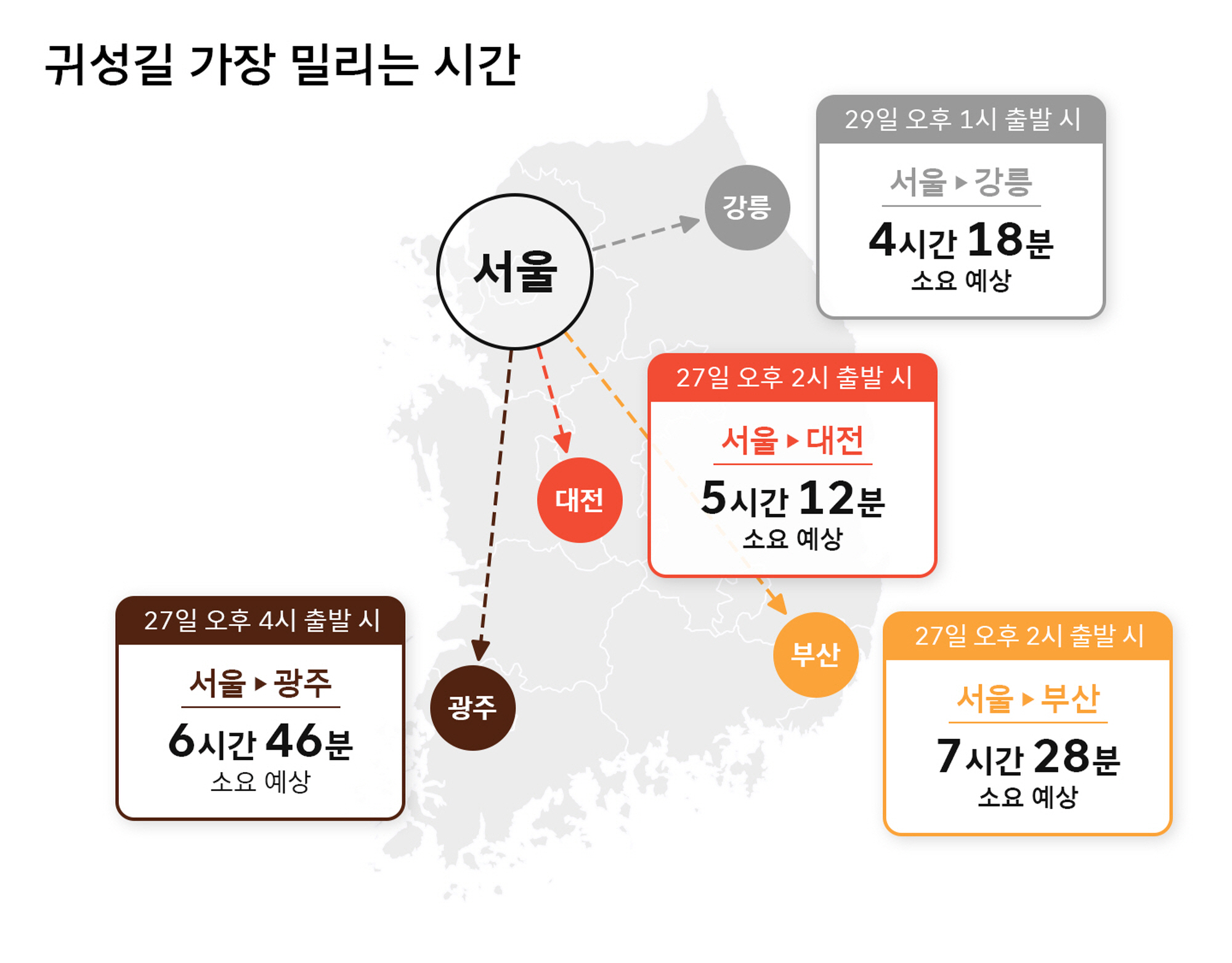
This Chuseok holiday (from September 28 to October 3), heavy traffic is expected to start from the afternoon of the 27th. The traffic volume from Seoul to Busan is forecast to increase sharply from noon, with those departing at 2 pm expected to face travel times of up to 7 hours and 28 minutes.
According to a prediction made by Tmap Mobility in collaboration with SK Telecom, based on five years of data on holiday travel patterns, the best time to leave for hometown visits is around 11 pm on the 27th to 3-4 am on the 28th.
From 1 pm to 6 pm on the 27th, travel times from Seoul to Gwangju and Seoul to Busan are expected to be around 7 hours. Notably, the Seoul-Busan route is predicted to peak around 2 pm, with traffic congestion expected to ease to about 4 hours at around 2 am on the 28th.
The Seoul-Daejeon route is also expected to see a significant increase in traffic from the afternoon of the 27th, with a maximum travel time of 5 hours and 12 minutes by 2 pm. Meanwhile, the Seoul-Kangwon route is expected to maintain normal levels, but peak travel times of around 4 hours and 30 minutes are predicted around lunchtime on the 28th and 29th.
The least congested times for returning home are expected to be from 9 pm on the 27th to the early morning (midnight to 6 am) on the 28th, and late night on the 28th to the 29th. Specifically, the Seoul-Gwangju route is expected to take about 3 hours around 2 am on the 29th, while the Seoul-Busan route is also predicted to take around 4 hours and 30 minutes.
Traffic volume for all routes is expected to gradually increase after the morning of the 29th, peaking until the afternoon, with congestion easing around 3 pm, restoring traffic flow to normal levels.
Returning home traffic is expected to be consistently congested from the 29th to the 3rd. For the Busan-Seoul route, traffic volume is predicted to increase significantly from 6 am on the 29th, peaking at around 11 am with travel times of 7 hours and 3 minutes. Additionally, significant congestion is anticipated early in the morning of the 30th and October 1st, with travel times of around 7 hours and 14 minutes.
The Gwangju-Seoul route is expected to experience congestion starting at 7 am on the 29th, peaking around noon with travel times of 5 hours and 37 minutes, while on the 30th and 1st, travel times are expected to reach up to 6 hours and 26 minutes by 1 pm. The Daejeon-Seoul route is forecasted to take about 4 hours after lunchtime.
Tmap Mobility will provide various features throughout the holiday period, including ▲Guidance on temporary hard shoulder and deceleration lanes ▲Incorporation of newly opened roads ▲Parking lots that are free to use during the holiday ▲Changes in the enforcement timing for bus-only lanes ▲Changes in toll fees for highways.
Newly added roads, such as the Dangjin-Cheongju Expressway and the Second Outer Circle Road of the Seoul Metropolitan Area, will have audible directions for sections where hard shoulder driving is permitted. A total of 15,000 parking spaces will be opened free of charge during the holiday, which can be checked on Tmap. This data can also be verified in the SK Telecom newsroom.
Reporter: Lee Sang-jin daedusj@autodiary.kr
